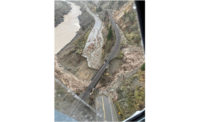Commentary on Natural Disasters
How to Reform Flood Insurance
Combining flood risks with other risks could bring many advantages

A flood-hit home in Memphis, Tenn., in 2011. Photo: FEMA
When FEMA’s National Flood Insurance Program (NFIP) expires next month, the pressure will be on Congress to reauthorize the program, ideally by adopting long-delayed reforms. Any discussion of NFIP reform should begin with an understanding of how it began, where it has gone and what is needed for its future.
When Congress created NFIP in 1968, the original concept was simple: identify community flood-risk areas on maps provided by the federal government; make available to homeowners and small businesses limited amounts of flood insurance, otherwise unavailable from the private sector; and limit availability to communities that agreed to regulate new development to make them safer from flooding in the future.
Times have changed since NFIP was created. More people want to live and vacation in high-risk coastal and inland flood-hazard areas.
Times have changed since NFIP was created. More people want to live and vacation in high-risk coastal and inland flood-hazard areas. NFIP’s increasing loss payouts and related expenses, as well as its inability to charge full actuarial rates for coverage, are killing it financially, with the deficit at $25 billion and growing. Moreover, NFIP’s inability to update its flood data and maps, the rising cost of the process, and the limited number of properties covered are making the situation unsustainable.
Congress has attempted to reform the NFIP many times. However, it has not made significant improvements or progress, often making the situation worse. Unfortunately, the reforms Congress seems to be considering simply tweak those parts of the NFIP that have drawn the most public complaints.
It is time for a new approach. The federal government should encourage private insurers to expand their involvement in flood insurance significantly beyond their current, limited reinsurance efforts. When NFIP was established, Congress and the Johnson administration hoped the private-property insurance industry would eventually take it over. But under NFIP’s current approach, that is very unlikely.
Imagining the Future
The private sector has done a fairly good job at providing insurance for fire and wind risks, covering a significant number of properties nationwide while including risk-mitigation efforts through local community-code adoption and enforcement. However, private insurers, too, are experiencing major challenges as their covered losses increase in developed and developing areas. In addition, the earthquake risk often goes unnoticed as little coverage is made available due, in part, to a lack of focus and interest.
Could the private sector do the same for flood as it has done for wind and fire? If insurers still consider stand-alone flood risk too great to take on without sharing it with government, they could establish policies covering all natural hazards. Could the federal government and private insurers join forces in this effort? If they can fashion a successful approach to covering flood and other natural hazards, both parties and the public would likely benefit. This new program could be administered in a similar manner as NFIP is today. The private-property insurance industry would still sell and service the policies, as they do for current property and NFIP policies. However, the private insurance industry would have a major role in setting the rates for the part of the risks it would cover.
Further, private insurers would have to have a major role in developing the underwriting terms and conditions for those risks. Due to the much larger spreading of the risk on at least the flood and earthquake components of the all-natural-hazard policy, those rate component amounts may wind up being less than today, thereby lowering the total costs of all such coverages to consumers.
An additional benefit to such an approach would be the reduction in the amount and cost of federal disaster financial assistance to property owners. When FEMA makes a disaster declaration, uninsured or underinsured property owners may apply to the appropriate federal agency, typically the Federal Emergency Management Agency or the Small Business Administration, for disaster assistance. If most structures were insured for all-natural-hazard damage, it would significantly reduce the need for such assistance.
The time is ripe for a new approach to the NFIP.
If you have an idea for a column, please contact Viewpoint Editor Richard Korman at kormanr@enr.com.



